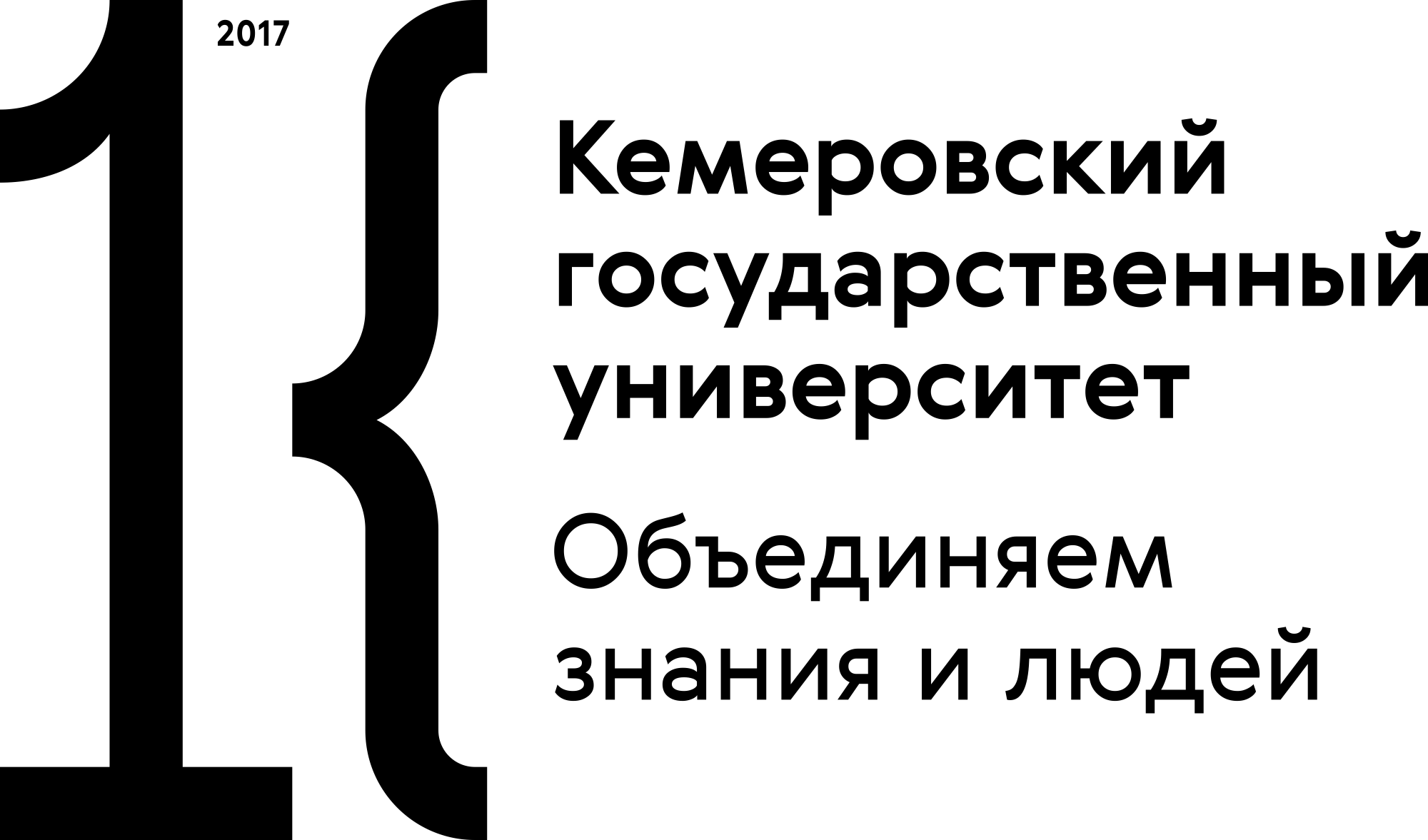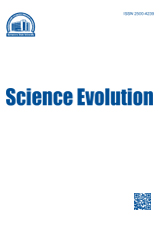Russian Federation
Russian Federation
Russian Federation
Russian Federation
CSCSTI 27.01
CSCSTI 31.01
CSCSTI 34.01
The authors discussed the results of study of population genetic structure of Khakass sub-ethnic groups - indigenous population of the Republic of Khakassia. The gene pool is studied according to two classes of markers: autosomal DNA (CCR2*rs1799864, CCR5*rs333, ACE1*rs4646994, PLAT*rs4646972, noA25*rs, PV92*rs3138523, ApoA1*rs3138522, noB65*rs, no F13B*rs) and quasigenetic markers (surnames). Total sample size was 249 persons for autosomal DNA dataset, and 9693 persons for the surnames dataset. Four Khakass sub-ethnic groups - Kachins, Koybals, Kyzyls, and Sagays - were investigated. Both classes of markers provided similar results on the subdivision of Khakass sub-ethnic groups and genetic relationships between them. Analysis of autosomal DNA markers showed statistically significant differences of allele frequencies. Interpopulation genetic variation (GST) of the Khakass populations was 2.10%. The largest genetic distances were observed when comparing Sagays and Kyzyls (d = 0.032). The least genetic distances were observed when comparing samples of Kachins and Koybals (d = 0.032). According to the surnames dataset, the similarity index (Ri) is minimal in the pair "Sagays - Kyzyls" and is maximal in a pair of "Kachins - Koybals". Genetic distances characterizing the differences between sub-ethnic groups, decrease, and kinship coefficient, which reflects the similarity increases in the following series: Sagays, Kyzyls, Kachins, and Koybals.
indigenous population, quasigenetic markers peptides, enzymic hydrolysis, biotechnological methods
1. Rychkov Yu.G. Osobennosti serologicheskoy differentsiatsii narodov Sibiri [Features of the Serological Differentiation of the Peoples of Siberia]. Voprosy antropologii [The problems of anthropology], 1965, no. 21, pp. 18-33.
2. Lavryashina M.B., Ul'yanova M.V., Vasinskaya O.A., Frolova S.A., Dibirova Kh.D., Balanovskaya E.V. Geneticheskiy portret desyati malykh narodov Yuzhnoy Sibiri [A genetic portrait of ten small nations of soutehrn Siberia]. Meditsinskaya genetika [Journal of Medical Genetics], 2010, vol. 9, no. 3, pp.12-17.
3. Solopekin N.V., Lavryashina M.B., Ul'yanova M.V., Tolochko T.A., Larionov A.V., Meyer A.V., Minina V.I., Druzhinin V.G. Issledovanie riska podverzhennosti alkogolizmu korennogo naseleniya yuga Zapadnoy Sibiri po dannym molekulyarno- geneticheskikh markerov [The study of alcohol addiction risk in the indigenous population of southwest siberia according to molecular genetic markers]. Vestnik Kemerovskogo gosudarstvennogo universiteta [Bulletin of Kemerovo State University], 2013, vol. 1, no. 1, pp. 39-43. doi:https://doi.org/10.21603/2078-8975-2013-1-39-43.
4. Derenko M.V., Malyarchuk B.A. Molekulyarnaya filogeografiya naseleniya Severnoy Azii po dannym ob izmenchivosti mtDNK [Molecular phylogeography of native population of the North Asia according to data on mitochondrial DNA variability]. Institute of Biological Problems of the North: FEB RAS, 2010. 376 p.
5. Mazulin I.Yu. Izmenchivost' mitokhondrial'noy DNK tubalarov Gornogo Altaya i evenov Vostochnoy Sibiri. Avtoref. diss. kand. biol. nauk [Mitochondrial DNA variation for Tubalars of the Altai Mountains in Evens in Eastern Siberia. Cand. biol. sci.]. Novosibirsk, 2010. 18 p.
6. Volkov V.G., Khar'kov V.N., Shtygasheva O.V., Stepanov V.A. Geneticheskoe issledovanie khakasskikh i teleutskikh seokov. Sravnitel'naya kharakteristika po dannym markerov Y-khromosomy [Genetic study of Khakass Teleut. Comparative characteristics Y- chromosome markers.]. Kul'tura kak sistema v istoricheskom kontekste: opyt Zapadno-Sibirskikh arkheologo-etnograficheskikh soveshchaniy: materialy XV Mezhdunarodnoy Zapadno-Sibirskoy arkheologo-etnograficheskoy konferentsii, Tomsk, 19-21 maya 2010 g [Culture as a system in its historical context: the experience of the West Siberian archaeological and ethnographic meetings: proceedings of the XV International West Siberian archaeological and ethnographic conference, Tomsk, 19-21 May 2010], 2010. pp. 403-405.
7. Balaganskaya, O.A. Geneticheskaya struktura po markeram Y khromosomy narodov Altaya (Rossii, Kazakhstana, Mongolii) [GenePool Structure of Altai people (Russia, Kazakhstan, Mongolia) Inferred from Y-Chromosome Marker Data]. Vestnik Moskovskogo universiteta. Seriya XXIII. Antropologiya [Bulletin of Moscow University. Series XXIII. Anthropology], 2011, no. 2, pp. 23-36.
8. Khar'kov V.N., Khamina K.V., Medvedeva O.F., Shtygasheva O.V., Stepanov V.A. Raznoobrazie genofonda khakasov: vnutrietnicheskaya differentsiatsiya i struktura gaplogrupp Y-khromosomy [Genetic diversity of the Khakass gene pool: Subethnic differentiation and the structure of Y-chromosome haplogroups]. Molekulyarnaya biologiya [Molecular biology], 2011, vol. 45, no. 3, pp. 446-458
9. Balanovskaya E.V. Vliyanie prirodnoy sredy na formirovanie genofonda tyurkoyazychnogo naseleniya gor i stepnykh predgoriy Altae-Sayan, Tyan'-Shanya i Pamira [Impact of the environment on the gene pool of Turkic-speaking populations of mountains and steppes in Altay, Sayan, Tien Shan and Pamir]. Vestnik Moskovskogo universiteta. Seriya XXIII ANTROPOLOGIYA [Bulletin of Moscow University. Series XXIII. ANTHROPOLOGY], 2014, no. 2, pp. 46-55
10. Vagaytseva K.V., Khar'kov V.N., Cherpinskaya K.V., Khitrinskaya I.Yu., Stepanov V.A. Geneticheskaya variabel'nost' X- stseplennykh STR-markerov v populyatsiyakh Sibiri [Genetic Variability of X Linked STR Markers in Siberian Populations]. Molekulyarnaya biologiya [Molecular biology], 2015, vol. 49, no. 2, pp. 305-312. doi:https://doi.org/10.7868/S0026898415020147.
11. Lavryashina, M.B. Shortsy: skhodstvo i razlichie territorial'nykh grupp po dannym fonda familiy i autosomnykh DNK markerov [Shor people: similarities and differences between territorial groups according to the pool of surnames and autosomal DNA markers]. Vestnik Moskovskogo universiteta. Seriya XXIII. Antropologiya [Bulletin of Moscow University. Series XXIII. Anthropology], 2011, no. 2, pp. 66-77.
12. Ul'yanova M.V. Lavryashina M.B., Nikolaev V.V. Famil'nyy analiz kak instrument otsenki dinamiki geneticheskoy struktury populyatsiy severnykh altaytsev [Surname analysis as a tool to assess dynamics of genetic structure of populations of the northern Altai]. VOGiS i assotsiirovannye geneticheskie simpoziumy: tezisy dokladov, Rostov na Donu 15-20 iyunya 2014 g. [VI Congress of Vavilov Society of geneticists and breeders and associated genetic workshops: abstracts, Rostov-on-Don, 15-20 June 2014]. Novosibirsk: "SB RAS Publishing House", 2014, 91 p.
13. Balanovskaya E.V., Zhabagin M.K., Agdzhoyan A.T. Populyatsionnye biobanki: printsipy organizatsii i perspektivy primeneniya v genogeografii i personalizirovannoy meditsine [Population biobanks: organization principles and prospects of application in gene geography and personalized medicine]. Genetika [Genetics], 2016, no. 12.
14. Raghavan M., Steinrücken M., Harris K. Genomic evidence for the Pleistocene and recent population history of Native Americans. Science, 2015, vol. 349, no. 6250. doi:https://doi.org/10.1126/science.aab3884.
15. Knappskog S., Gansmo L., Dibirova K. Population distribution and ancestry of the cancer protective mdm2 snp285 (rs117039649). Oncotarget, 2014, vol. 18, no. 5, pp. 8223-8234. doi:https://doi.org/10.18632/oncotarget.1910.
16. Kyzlasov L.R. Istoriya Yuzhnoy Sibiri v srednie veka [History of Southern Siberia in the Middle Ages]. Moscow, 1984, 52 p.
17. Butanaev V.Ya. Vopros o samonazvanii khakasov [Question of the self-designation of Khakases]. Etnograficheskoe obozrenie [Ethnographic Review], 1992, pp. 63-69.
18. Butanaev V.Ya Etnicheskaya istoriya khakasov XVII-XIX vv. [Ethnic history of Khakases in the XVII-XIX centuries]. Materialy k serii “Narody Sovetskogo Soyuza”. Vyp. 3. Khakasy [Materials for the series "The peoples of the Soviet Union". Issue 3. Khakass]. Moscow, 1990, 15 p.
19. Butanaev V.Ya. Proiskhozhdenie khakasskikh rodov i familiy [Origin of Khakassian genera and surnames]. Abakan, 1994. 93 p.
20. Krivonogov V.P. Etnicheskie protsessy u malochislennykh narodov Sredney Sibiri [Ethnic processes of small-numbered peoples in Central Siberia]. Krasnoyarsk: KSPU Publ., 1998, 320 p.
21. Lavryashina M.B., Ul'yanova M.V., Balanovskaya E.V. Vliyanie genetiko-demograficheskikh protsessov na strukturu sel'skikh populyatsiy korennogo naseleniya Yuzhnoy Sibiri: tri neperekryvayushchikhsya pokoleniya po dannym o demografii i rasprostranennosti familiy [The influence of demographic processes on population-genetic structure in rural populations of native people of Southern Siberia: the three non-overlapping generations on data of demography and surnames distribution]. Meditsinskaya genetika [Medical Genetics], 2010, vol. 9, no. 4, pp. 16-24.
22. Bagashev A.N. Rasogenez korennogo naseleniya [Race genesis of the indigenous population]. Tomsk: TSU Publ., 1998, 354 p.
23. Balaganskaya O.A., Balanovskaya E.V., Lavryashina M.B., Isakova Zh.T. Polimorfizm Y khromosomy u tyurkoyazychnogo naseleniya Altaye-Sayan, Tyan'-Shanya i Pamira v kontekste vzaimodeystviya genofondov zapadnoy i vostochnoy Yevrazii [Y-chromosomal polymorphism in Turkic-speaking populations from Altai-Sayan, Tien-Shan and Pamir mountains in context of the interaction between western and eastern Eurasian gene pools]. Meditsinskaya genetika [Medical Genetics], 2011, vol. 10, no. 3, pp. 12-22.
24. Lasker G.W. A coefficient of relationship by isonymy: a method for estimating the genetic relationship between populations.
25. Human. Biol., 1977, vol. 49, no. 3, pp. 489-493.
26. Nei M. Molecular evolutionary genetics. Amsterdam, 1975. 278 p.
27. Balanovsky O., Rootsi S., Pshenichnov A., Kivisild T., Churnosov M. Two sources of the Russian patrilineal heritage in their Eurasian context. Am. J. Hum. Genet, 2008, vol. 82, pp. 236-250.
28. Kofiadi I.A. Geneticheskaya ustoychivost' k zarazheniyu VICh i ustoychivost' SPID v populyatsiyakh Rossii i sopredel'nykh gosudarstv: Avtoref. dis. kand. biol. nauk [Genetic resistance to HIV infection and AIDS stability in populations of Russia and neighboring countries. Cand. biol. sci.]. Moscow, 2008, 23 p.
29. Liu M., Wang F., Jin L., Hong W., Lei Z., Zhang B., Hou J., Zhang B., Hou J., Zhang, Tang. C. Characterization of CCR5 del32, CCR2b-64I, CXCR1-249I280M and SDF1-3'A Allelic polymorphisms in the Chinese Uygur Population. Chinese Journal of Sexually Transmitted Infections, 2002, no. 2, pp. 7-11.
30. Su B., Sun G., Lu D., Xiao J., Hu F., Chakraborty R., Deka R., Jin L. Distribution of three HIV-1 resistance-conferring polymorphisms (SDF1-3'A, CCR2-641, and CCR5-delta32) in global populations. Eur. J. Hum. Genet., 2000, no. 8, pp. 975-979.
31. Voevoda M.I. Polimorfizm i svyaz' s faktorami riska nekotorykh genov predraspolozhennosti k serdechnososudistym zabolevaniyam v etnicheskikh gruppakh Sibiri. Evolyutsionno-geneticheskie i molekulyarno-epidemiologicheskie aspekty. Diss. dokt. med. nauk [Polymorphism and linkage with risk factors of some susceptibility genes to cardiovascular diseases in ethnic groups of Siberia, molecular epidemiological and evolutionary-genetic aspects. Dr. med. sci. diss.]. Novosibirsk, 2002, 50 p.
32. Kozhekbaeva G.M., Borodina T.A., Borinskaia S.A., Gusar V.A., Feshchenko S.P., Akhmetova V.L., Khusainova R.I., Gupalo E.Iu., Spitsyn V.A., Grechanina E.Ia., Khusnutdinova K., Iankovskiĭ N.K. Distribution of the HIV-1 resistance-conferring alleles (CCR5delta32, CCR2-64I, and SDF1 3'A) in Russian, Ukrainian, and Belarusian populations. Genetika, 2004, vol. 40, pp. 1394-1401.
33. Lavryashina M.B., Ul'yanova M.V., Balaganskaya O.A., Balaganskiy A.G., Balanovskaya E.V. Geneticheskiy portret desyati malykh narodov Yuzhnoy Sibiri [A genetic portrait of ten small nations of soutehrn Siberia]. Meditsinskaya genetika [Medical Genetics], 2010, vol. 99, no. 9, pp. 16-23.
34. Balanovskaya E.V., Balanovskiy O.P. Russkiy genofond na russkoy ravnine [Russian gene pool in the Russian plain]. Moscow: Luch Publ., 2007, 416 p.
35. El'chinova G.I., Zinchenko R.A. Dopustimost' ispol'zovaniya tatarskikh familiy v kachestve kvazigeneticheskogo markera v populyatsionno-geneticheskikh issledovaniyakh [Possibility to use tatar surnames as a quasigenetic marker in population-genetic researches]. Vestnik MGU. Seriya XXIII. Antropologiya [Bulletin of Moscow State University. Series XXIII. Anthropology], 2010, no. 2, pp. 55-61.
36. Turi E. Kingemail, Mark A. Jobling What's in a name? Y chromosomes, surnames and the genetic genealogy revolution. Trends in genetics, 2009, vol. 25, no. 8, pp. 351-360. doi: http://dx.doi.org/10.1016/j.tig.2009.06.003.
37. Calderon R., Hernandez C.L., Cuesta P., Dugoujon J.M. Surnames and Y-Chromosomal Markers Reveal Low Relationships in Southern Spain. PLoS One, 2015, vol. 10, no. 4. doi:https://doi.org/10.1371/journal.pone.0123098.
38. Lavryashina M.B. Kompleksnoe issledovanie dinamiki demograficheskikh protsessov i struktury genofonda korennykh narodov Yuzhnoy Sibiri. Diss. doct. biol. nauk [A comprehensive study of dynamics of demographic processes and structure of the gene pool of the indigenous populations of Southern Siberia. Dr. biol. sci. diss.]. Moscow, 2012, 56 p.










